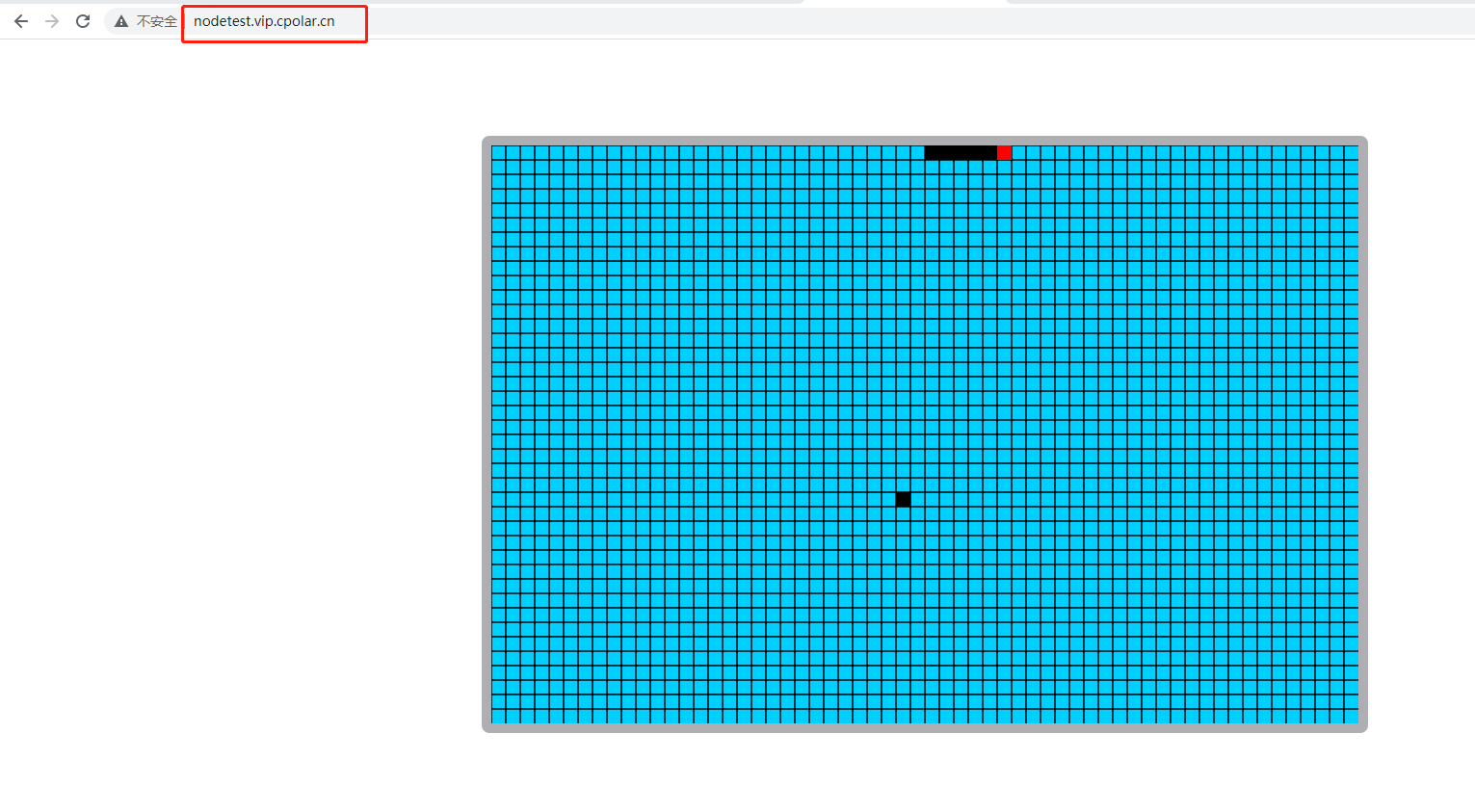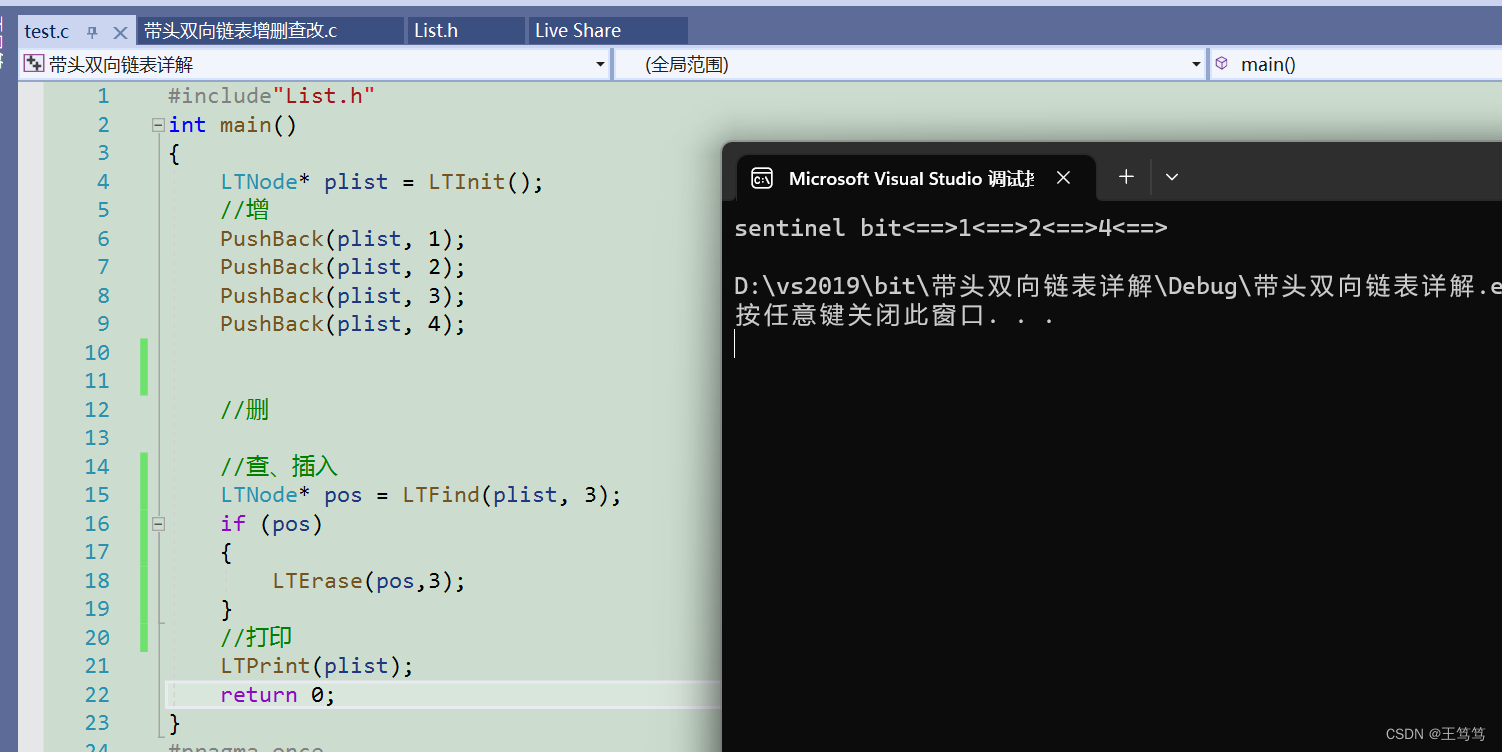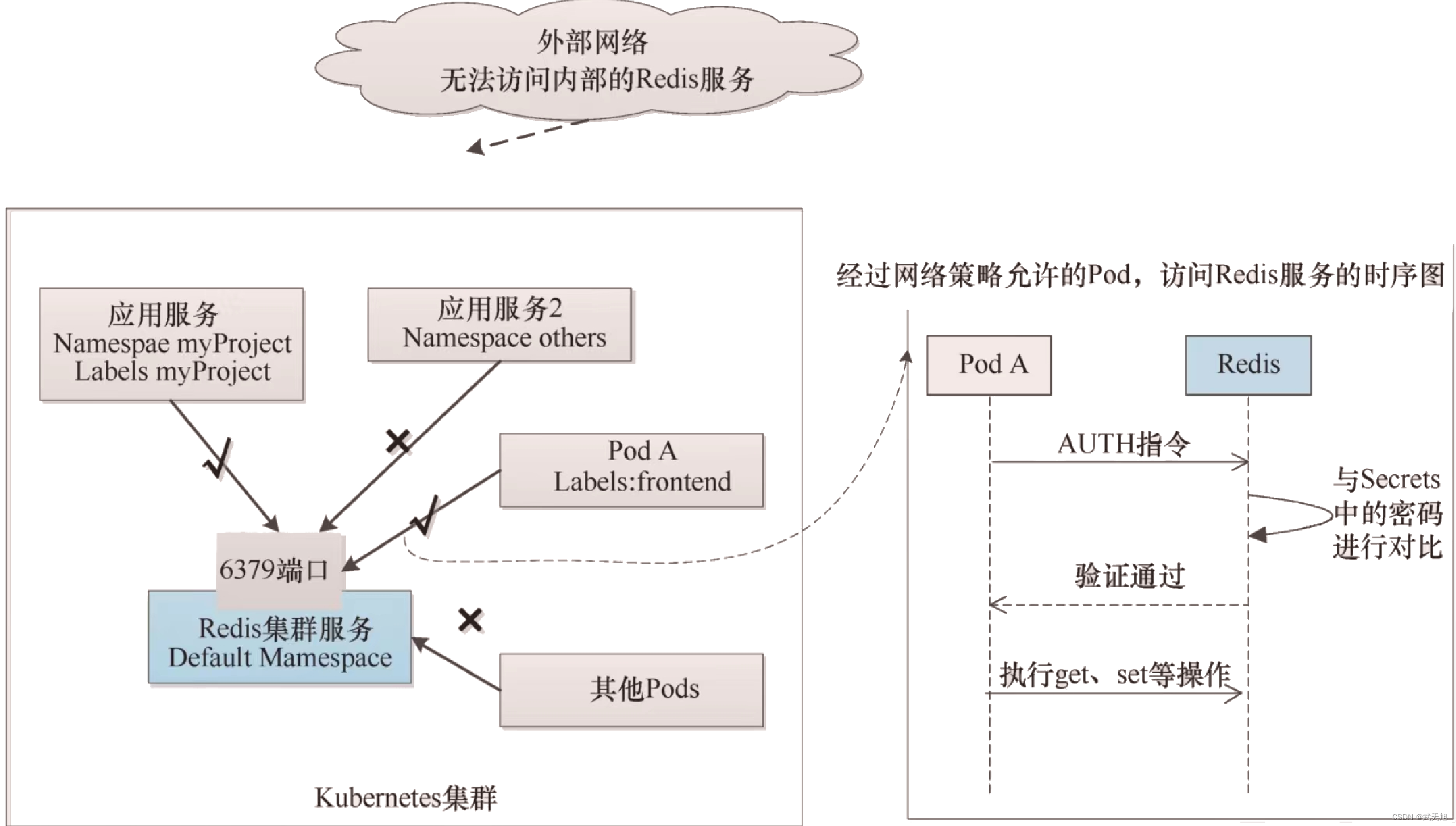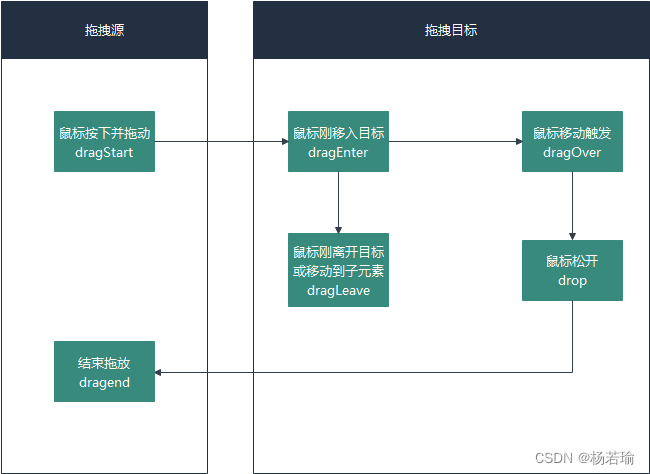
目录
1. 买卖股票的最佳时机 🌟
2. 两数相加 🌟🌟
3. 二叉树的后序遍历 🌟
🌟 每日一练刷题专栏 🌟
Golang每日一练 专栏
Python每日一练 专栏
C/C++每日一练 专栏
Java每日一练 专栏
1. 买卖股票的最佳时机
给定一个数组 prices ,它的第 i 个元素 prices[i] 表示一支给定股票第 i 天的价格。
你只能选择 某一天 买入这只股票,并选择在 未来的某一个不同的日子 卖出该股票。设计一个算法来计算你所能获取的最大利润。
返回你可以从这笔交易中获取的最大利润。如果你不能获取任何利润,返回 0 。
示例 1:
输入:prices = [7,1,5,3,6,4] 输出:5 解释:在第 2 天(股票价格 = 1)的时候买入,在第 5 天(股票价格 = 6)的时候卖出,最大利润 = 6-1 = 5 。 注意利润不能是 7-1 = 6, 因为卖出价格需要大于买入价格;同时,你不能在买入前卖出股票。
示例 2:
输入:prices = [7,6,4,3,1] 输出:0 解释:在这种情况下, 没有交易完成, 所以最大利润为 0。
提示:
1 <= prices.length <= 10^50 <= prices[i] <= 10^4
出处:
https://edu.csdn.net/practice/27913247
代码:
#include <bits/stdc++.h>
using namespace std;
class Solution
{
public:
int maxProfit(vector<int> &prices)
{
int profit = INT_MIN;
int buy = INT_MAX;
for (int i = 0; i < prices.size(); i++)
{
int temp = prices[i] - buy;
if (temp > profit)
{
profit = temp;
}
if (temp < 0)
{
buy = prices[i];
}
}
return (profit > 0) ? profit : 0;
}
};
int main()
{
Solution s;
vector<int> prices = {7,1,5,3,6,4};
cout << s.maxProfit(prices) << endl;
prices = {7,6,4,3,1};
cout << s.maxProfit(prices) << endl;
return 0;
}输出:
5
0
2. 两数相加
给你两个 非空 的链表,表示两个非负的整数。它们每位数字都是按照 逆序 的方式存储的,并且每个节点只能存储 一位 数字。
请你将两个数相加,并以相同形式返回一个表示和的链表。
你可以假设除了数字 0 之外,这两个数都不会以 0 开头。
示例 1:
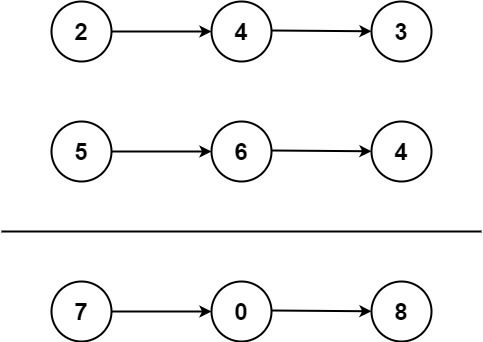
输入:l1 = [2,4,3], l2 = [5,6,4] 输出:[7,0,8] 解释:342 + 465 = 807.
示例 2:
输入:l1 = [0], l2 = [0] 输出:[0]
示例 3:
输入:l1 = [9,9,9,9,9,9,9], l2 = [9,9,9,9] 输出:[8,9,9,9,0,0,0,1]
提示:
- 每个链表中的节点数在范围
[1, 100]内 0 <= Node.val <= 9- 题目数据保证列表表示的数字不含前导零
以下程序实现了这一功能,请你填补空白处内容:
```c++
struct ListNode
{
int val;
struct ListNode *next;
};
struct ListNode *addTwoNumbers(struct ListNode *l1, struct ListNode *l2)
{
struct ListNode *pp = NULL, *p = l1;
struct ListNode *qp = NULL, *q = l2;
int carry = 0;
while (p != NULL && q != NULL)
{
p->val += q->val + carry;
carry = 0;
if (p->val >= 10)
{
carry = 1;
p->val -= 10;
}
pp = p;
p = p->next;
qp = q;
q = q->next;
}
if (q)
{
pp->next = p = q;
qp->next = NULL;
}
____________________;
if (carry)
{
struct ListNode *n = (struct ListNode *)malloc(sizeof(struct ListNode));
n->val = 1;
n->next = NULL;
pp->next = n;
}
return l1;
}
```
出处:
https://edu.csdn.net/practice/27913248
代码:
#include <bits/stdc++.h>
using namespace std;
struct ListNode
{
int val;
struct ListNode *next;
ListNode(int x) : val(x), next(NULL) {}
};
struct ListNode *addTwoNumbers(struct ListNode *l1, struct ListNode *l2)
{
struct ListNode *pp = NULL, *p = l1;
struct ListNode *qp = NULL, *q = l2;
int carry = 0;
while (p != NULL && q != NULL)
{
p->val += q->val + carry;
carry = 0;
if (p->val >= 10)
{
carry = 1;
p->val -= 10;
}
pp = p;
p = p->next;
qp = q;
q = q->next;
}
if (q)
{
pp->next = p = q;
qp->next = NULL;
}
while (carry && p)
{
p->val += carry;
carry = 0;
if (p->val >= 10)
{
carry = 1;
p->val -= 10;
}
pp = p;
p = p->next;
}
if (carry)
{
struct ListNode *n = (struct ListNode *)malloc(sizeof(struct ListNode));
n->val = 1;
n->next = NULL;
pp->next = n;
}
return l1;
}
struct ListNode* vectorToListNode(vector<int>& nums)
{
struct ListNode* head = new ListNode(0);
struct ListNode* curr = head;
for (int i = 0; i < nums.size(); i++) {
curr->next = new ListNode(nums[i]);
curr = curr->next;
}
return head->next;
}
void printList(ListNode *head)
{
ListNode *p = head;
while (p != NULL)
{
printf("%d->", p->val);
p = p->next;
}
printf("null\n");
}
int main()
{
vector<int> l1 = {2,4,3};
vector<int> l2 = {5,6,4};
ListNode* L1 = vectorToListNode(l1);
ListNode* L2 = vectorToListNode(l2);
printList(L1);
printList(L2);
ListNode* Ls = addTwoNumbers(L1, L2);
printList(Ls);
l1 = {9,9,9,9,9,9,9};
l2 = {9,9,9,9};
L1 = vectorToListNode(l1);
L2 = vectorToListNode(l2);
printList(L1);
printList(L2);
Ls = addTwoNumbers(L1, L2);
printList(Ls);
return 0;
}输出:
2->4->3->null
5->6->4->null
7->0->8->null
9->9->9->9->9->9->9->null
9->9->9->9->null
8->9->9->9->0->0->0->1->null
3. 二叉树的后序遍历
给定一个二叉树,返回它的 后序 遍历。
示例:
输入: [1,null,2,3]
1
\
2
/
3
输出: [3,2,1]
进阶: 递归算法很简单,你可以通过迭代算法完成吗?
出处:
https://edu.csdn.net/practice/27913249
代码:
#define null INT_MIN
#include <bits/stdc++.h>
using namespace std;
struct TreeNode
{
int val;
TreeNode *left;
TreeNode *right;
TreeNode(int x) : val(x), left(NULL), right(NULL) {}
};
class Solution
{
public:
vector<int> postorderTraversal(TreeNode *root)
{
dfs(root);
return temp;
}
void dfs(TreeNode *root)
{
if (root == NULL)
return;
dfs(root->left);
dfs(root->right);
temp.push_back(root->val);
}
vector<int> temp;
};
TreeNode* buildTree(vector<int>& nums)
{
TreeNode *root = new TreeNode(nums[0]);
queue<TreeNode*> q;
q.push(root);
int i = 1;
while(!q.empty() && i < nums.size())
{
TreeNode *cur = q.front();
q.pop();
if(nums[i] != null)
{
cur->left = new TreeNode(nums[i]);
q.push(cur->left);
}
i++;
if(i < nums.size() && nums[i] != null)
{
cur->right = new TreeNode(nums[i]);
q.push(cur->right);
}
i++;
}
return root;
}
string vectorToString(vector<int> vect) {
stringstream ss;
ss << "[";
for (size_t i = 0; i < vect.size(); i++)
{
ss << (vect[i] == null ? "null" : to_string(vect[i]));
ss << (i < vect.size() - 1 ? "," : "]");
}
return ss.str();
}
int main()
{
Solution s;
vector<int> root = {1,null,2,3};
TreeNode* tree = buildTree(root);
cout << vectorToString(s.postorderTraversal(tree)) << endl;
return 0;
}输出:
[3,2,1]
迭代法:
#define null INT_MIN
#include <bits/stdc++.h>
using namespace std;
struct TreeNode
{
int val;
TreeNode *left;
TreeNode *right;
TreeNode(int x) : val(x), left(NULL), right(NULL) {}
};
class Solution {
public:
vector<int> postorderTraversal(TreeNode* root) {
stack<TreeNode*> s;
vector<int> result;
if (!root) {
return result;
}
s.push(root);
TreeNode* prev = NULL;
while (!s.empty()) {
TreeNode* curr = s.top();
if (!prev || prev->left == curr || prev->right == curr) {
if (curr->left) {
s.push(curr->left);
} else if (curr->right) {
s.push(curr->right);
} else {
result.push_back(curr->val);
s.pop();
}
} else if (curr->left == prev) {
if (curr->right) {
s.push(curr->right);
} else {
result.push_back(curr->val);
s.pop();
}
} else if (curr->right == prev) {
result.push_back(curr->val);
s.pop();
}
prev = curr;
}
return result;
}
};
TreeNode* buildTree(vector<int>& nums)
{
TreeNode *root = new TreeNode(nums[0]);
queue<TreeNode*> q;
q.push(root);
int i = 1;
while(!q.empty() && i < nums.size())
{
TreeNode *cur = q.front();
q.pop();
if(nums[i] != null)
{
cur->left = new TreeNode(nums[i]);
q.push(cur->left);
}
i++;
if(i < nums.size() && nums[i] != null)
{
cur->right = new TreeNode(nums[i]);
q.push(cur->right);
}
i++;
}
return root;
}
string vectorToString(vector<int> vect) {
stringstream ss;
ss << "[";
for (size_t i = 0; i < vect.size(); i++)
{
ss << (vect[i] == null ? "null" : to_string(vect[i]));
ss << (i < vect.size() - 1 ? "," : "]");
}
return ss.str();
}
int main()
{
Solution s;
vector<int> root = {1,null,2,3};
TreeNode* tree = buildTree(root);
cout << vectorToString(s.postorderTraversal(tree)) << endl;
return 0;
}🌟 每日一练刷题专栏 🌟
✨ 持续,努力奋斗做强刷题搬运工!
👍 点赞,你的认可是我坚持的动力!
🌟 收藏,你的青睐是我努力的方向!
✎ 评论,你的意见是我进步的财富!
☸ 主页:https://hannyang.blog.csdn.net/
 | Golang每日一练 专栏 |
 | Python每日一练 专栏 |
 | C/C++每日一练 专栏 |
 | Java每日一练 专栏 |


